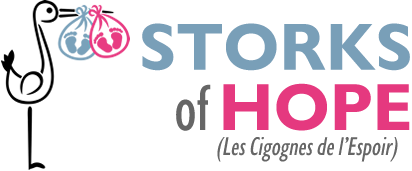Interview with Prof. Michael Grynberg, obstetric gynecologist
Hello Professor Grynberg. Tell us about your educational and professional background.
I studied medicine, specialising in obstetrics and gynaecology and then in reproductive medicine. After passing the competitive diploma to become a university lecturer, I went to live in the United States to work for a while. I also had the opportunity to work with Professor Frydman for several years. I am currently a professor and head of department at both the Antoine Béclère Hospital in Clamart and the Jean Verdier Hospital in Bondy.
What role does a gynaecologist play in infertility issues?
The gynaecologist is usually the first person consulted. He or she carries out the initial examinations and can then either initiate treatment or refer the patient to an Assisted Reproductive Technology (ART) centre. Personally, I deal with infertile men and women.
If you want to have children, there are many alternative solutions to infertility.
Can you tell us which ones come to mind?
ART (Assisted Reproductive Technology) currently makes it possible to help infertile heterosexual couples with their own gametes or sometimes with a third-party donor. ART techniques include:
- Intrauterine insemination, which consists of placing selected spermatozoa at the bottom of the uterus after moderate ovarian stimulation of the patient. Fertilisation thus occurs naturally in the fallopian tubes.
- IVF (In Vitro Fertilisation), which involves strong ovarian stimulation so that the woman produces as many eggs as possible. The eggs are retrieved in the operating theatre and fertilised in the laboratory with sperm. The embryos obtained are cultured in suitable media and placed 2 to 5 days later in the woman's uterus.
Surgery also plays an important role in the treatment of infertility. Tubal obstructions, abnormalities of the uterine cavity and even endometriosis can all be treated. The aim of surgery is to improve the chances of natural or medically assisted conception. For men, if there are no spermatozoa in the ejaculate, it may be necessary to take surgical samples to try to recover some directly from the testicles.
What do you think of alternatives such as naturopathy, food supplements, relaxation therapy and art therapy?
I have nothing against natural methods, but it's hard to prove that they work. However, some couples are very keen to try them. We mustn't dissuade them, but explain to them that all these methods are complementary to ART.
Food supplements are increasingly prescribed to ‘improve’ fertility in both women and men. Similarly, the levels of evidence for the efficacy of these treatments remain low.
So what can the gynaecologist suggest in terms of medication?
Whatever ART technique is proposed, the basis will always be ovarian stimulation, which for the woman will consist of daily hormonal injections for around 12-15 days.
How is infertility diagnosed?
Infertility is not really diagnosed because there are no fertility markers. Infertility tests are aimed at testing a woman's ovarian, tubal (fallopian tube) and uterine function. Ovarian ultrasound, hormone measurements (anti-müllerian hormone) and tubal X-rays are carried out. Hormone assays measure how the ovaries function and how the woman is likely to respond to any hormones administered. They do not give any qualitative information about the oocytes.
One important point is that, contrary to many beliefs, the pill does not affect women's fertility after they stop taking it, and does not cause the ovaries to ‘age’ more quickly.
As for the male assessment, this is based mainly on sperm analysis.
Could you give me some figures on the causes of infertility?
30% of causes are female and are generally due to problems with ovulation, fallopian tubes and, increasingly, ageing ovaries. 30% of causes are male and are mainly due to a deterioration in sperm parameters (sperm concentration, motility, etc.). 30% of causes are mixed, and 10% are unexplained.
Article published by the non-profit organisation ‘Storks of Hope / Les Cigognes de l'Espoir’ All rights reserved.

